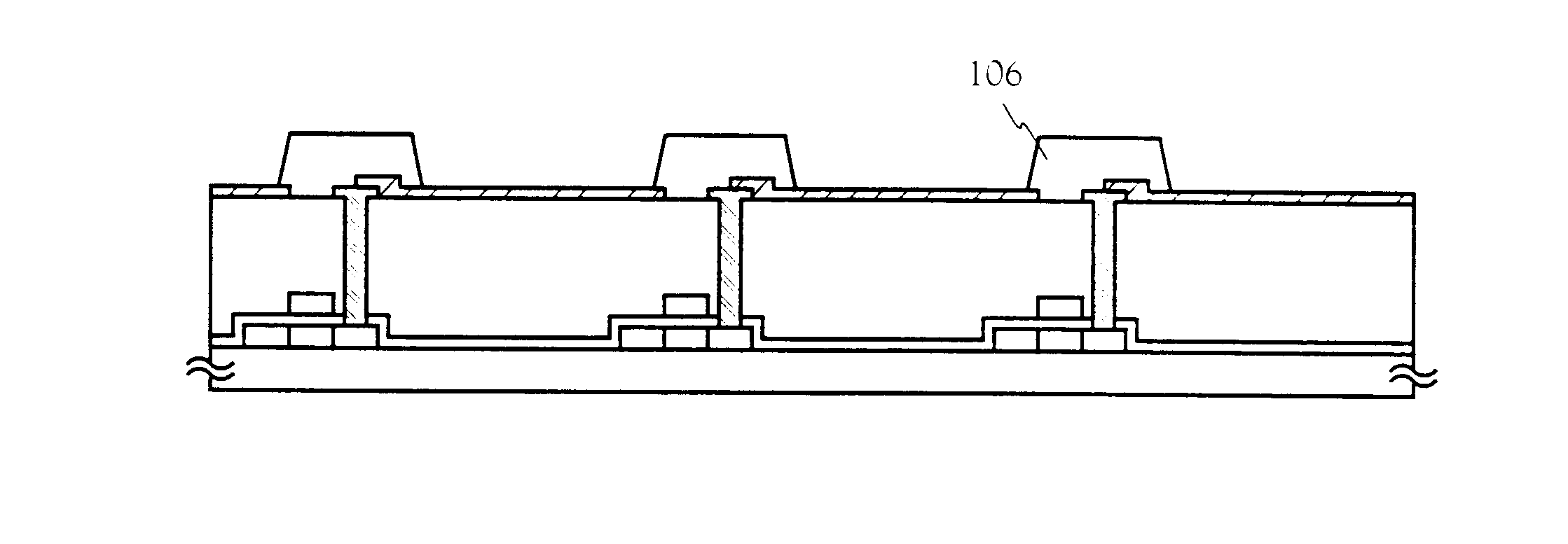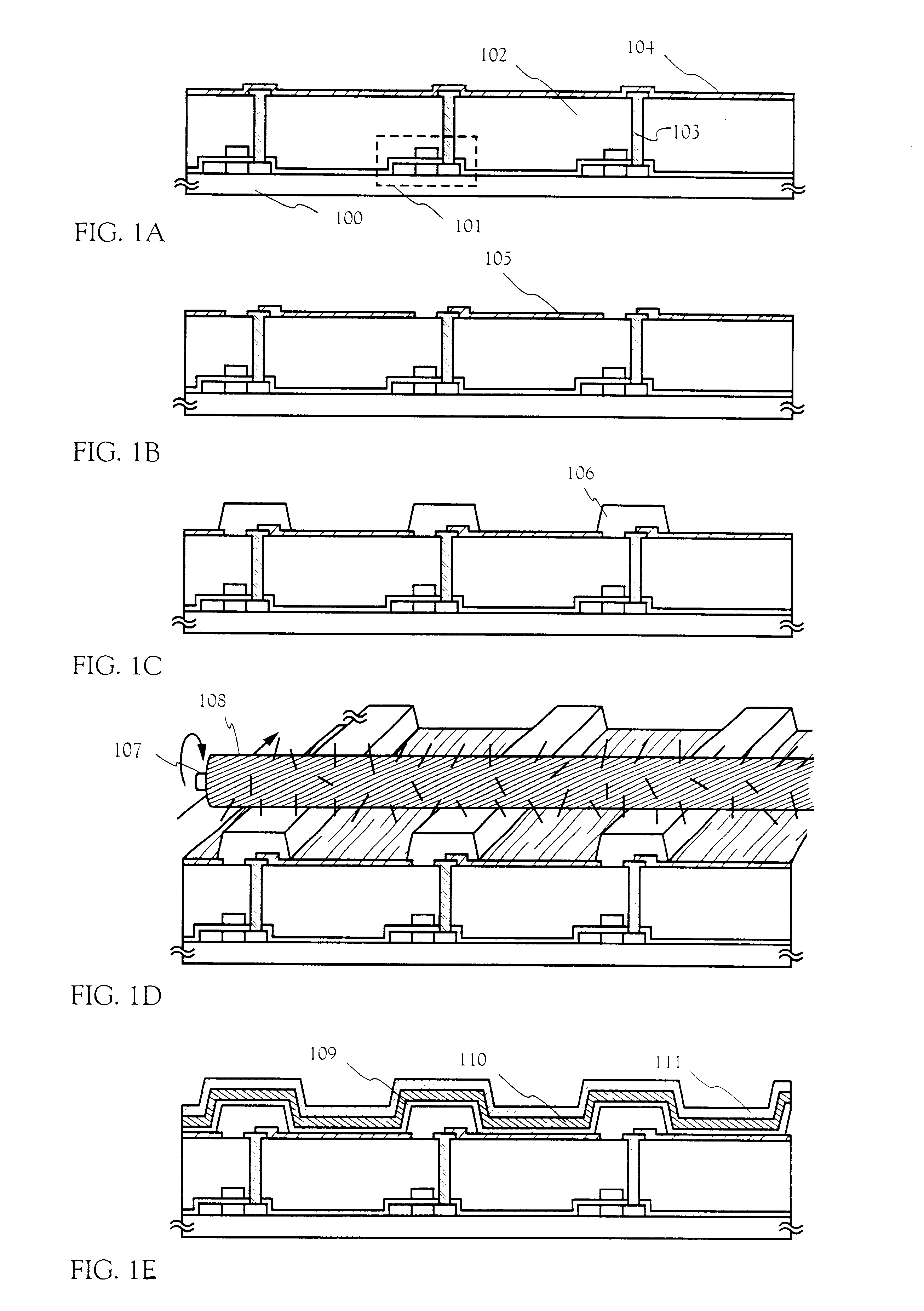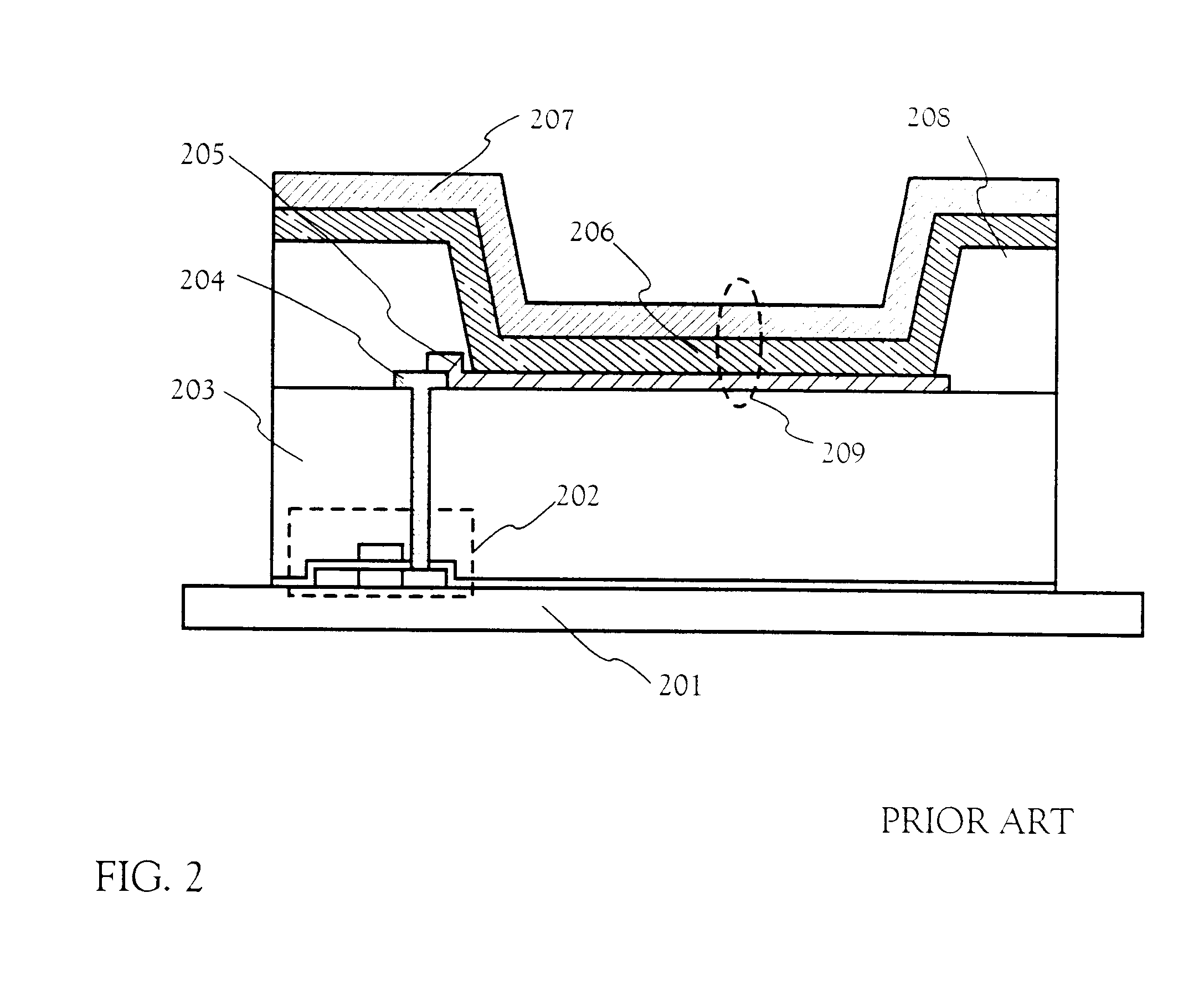Light emitting device and manufacturing method thereof
a technology of light emitting devices and manufacturing methods, applied in the direction of semiconductor devices, basic electric elements, electrical appliances, etc., can solve the problems of reducing the number of holes injected, deterioration of the light emitting element itself, and the number of holes
- Summary
- Abstract
- Description
- Claims
- Application Information
AI Technical Summary
Benefits of technology
Problems solved by technology
Method used
Image
Examples
embodiment 1
In this embodiment, the light emitting element formed by using the present invention is explained. Described next is an example of a method of manufacturing, at the same time over the same substrate, TFTs for a pixel portion having an organic light emitting element of the present invention and TFTs (an n-channel TFT and a p-channel TFT) for a driver circuit that is provided in the periphery of the pixel portion. The description will be given with reference to FIGS. 3A to 6C.
First, this embodiment uses a substrate 900 made of barium borosilicate glass, typically Corning #7059 glass and # 1737 glass (products of Corning Incorporated), or alumino borosilicate glass. No limitation is put to the material of the substrate 900 as long as it is light-transmissive (translucent), and a quartz substrate may be used. A plastic substrate may also be used if it can withstand heat at the process temperature of this embodiment.
Next, as shown in FIG. 3A, a base film 901 is formed on the substrate 90...
embodiment 2
A method of manufacturing a light emitting device is explained in Embodiment 2 using FIGS. 18 to 21B by taking an example different from that in Embodiment 1.
Manufacturing is performed in accordance with Embodiment 1 up through the step of forming the two layer conductive films 907 and 908 on the gate insulating film 906, as shown in FIG. 3A.
The conductive films 907 and 908 are then etched using the masks 909a to 909d, forming conductive layers 3901 to 3904 (3901a-3904a and 3901b-3904b) having a first tapered shape. An ICP (inductively coupled plasma) etching method is used for the etching. There are no limitations placed on the etching gasses used, but CF.sub.4, Cl.sub.2, and O.sub.2 are used for etching of the W film and tantalum nitride film. The gas flow rates are set so as to be 25:25:10, respectively, and etching is performed at a pressure of 1 Pa with an RF (13.56 MHz) electric power of 500 W introduced into a coil shape electrode. An RF (13.56 MHz) electric power of 150 W is...
embodiment 3
can be used in combination with the embodiment mode and Embodiments 1 and 2.
PUM
| Property | Measurement | Unit |
|---|---|---|
| band gap | aaaaa | aaaaa |
| thickness | aaaaa | aaaaa |
| transparent | aaaaa | aaaaa |
Abstract
Description
Claims
Application Information
 Login to View More
Login to View More - R&D
- Intellectual Property
- Life Sciences
- Materials
- Tech Scout
- Unparalleled Data Quality
- Higher Quality Content
- 60% Fewer Hallucinations
Browse by: Latest US Patents, China's latest patents, Technical Efficacy Thesaurus, Application Domain, Technology Topic, Popular Technical Reports.
© 2025 PatSnap. All rights reserved.Legal|Privacy policy|Modern Slavery Act Transparency Statement|Sitemap|About US| Contact US: help@patsnap.com



